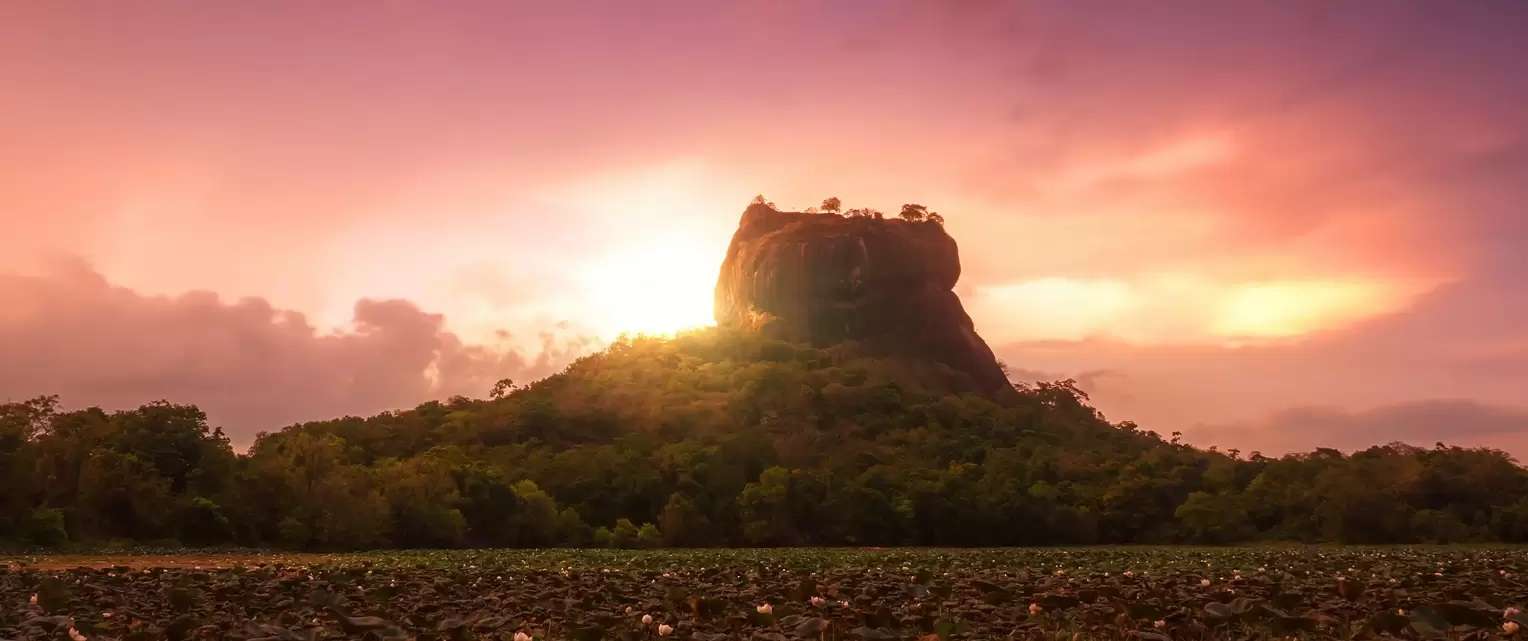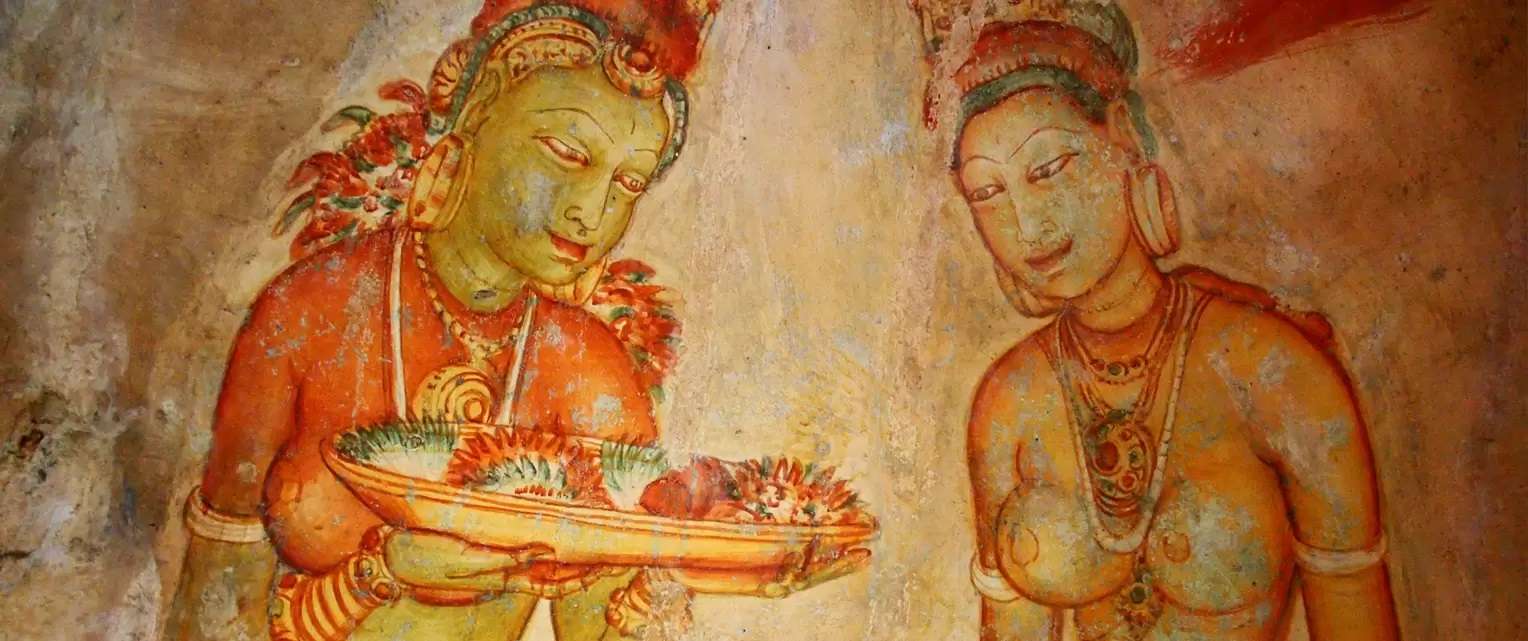The Sri Lanka beaches are well known for their idyllic looks and beautiful scenery. The Paradise Beaches in Sri Lanka stretch from east to west the beaches vary from long golden ones to the perfect wind and waves.

If you ask someone to name a famous memorable landmark in Sri Lanka many people would think about Sigiriya without hesitations. Lion Rock in Sigiriya is one of the most popular landmarks to visit during a route through Sri Lanka.
It is located in the heart of the island between the towns of Dambulla and Habarane. The natural phenomenon is an enormous (200m) square-shaped rock that looks like it’s placed there. It was converted into a fortress and palace by King Kashyapa during the Anuradhapura Kingdom period. The fortress complex includes remnants of a ruined palace, surrounded by an extensive network of fortifications, vast gardens, ponds, canals, alleys, and fountains.
Lion Rock is one of the eight UNESCO World Heritage sights and is a must-visit in Sri Lanka.
This might be one of the most overlooked aspects of what Sigiriya has to offer; The Rock and water gardens that you see on your way to the rock. The buildings and gardens of Sigiriya show that the creators of this amazing architectural monument used unique and creative technical skills and technologies.
The construction of such a monument on a massive rock approximately 200 meters higher from the surrounding landscape required advanced architectural and engineering skills.
The gardens of Sigiriya are among the oldest landscaped gardens in the world. Sigiriya has water gardens, cave and boulder gardens, and also terraced gardens.
They are located in the western part of the rock and are with a complex hydraulic system, which consists of canals, locks, lakes, dams, bridges, fountains, as well as surface and underground water pumps.
In the rainy season, all channels are filled with water, which begins to circulate through the whole area of Sigiriya. The fountains of Sigiriya built in the V century, perhaps, are the oldest in the world.
The palace and fortress complex is recognized as one of the finest examples of ancient urban planning. Considering the uniqueness of Sigiriya UNESCO declared it a World Heritage site in 1982. Sigiriya is an unmatched combination of urban planning, water engineering, horticulture, and arts.

It is adjudged that the Sigiriya Rock is actually a hardened magma plug from an extinct volcano. The most significant feature of the rock would be the Lion staircase leading to the palace garden.
The Lion could be visualized as a huge figure towering against the granite cliff. The opened mouth of the Lion leads to the staircase built of bricks and timber. However, the only remains of this majestic structure are the two paws and the masonry walls surrounding it. Nevertheless, the cuts and groves in the rock face give an impression of a lion figure. It was designed in the form of a huge stone lion, whose feet have survived up to today but the upper parts of the body were destroyed.
Thanks to this lion the palace was named Sigiriya. The term Sigiriya originates from the word Sihagri, i.e. Lion Rock.
The western wall of Sigiriya was almost entirely covered by frescoes, created during the reign of Kasyapa. Eighteen frescoes have survived to this day.
The frescoes are depicting nude females and are considered to be either the portraits of Kasyapa’s wives and concubines or priestesses performing religious rituals.
Despite the unknown identity of the females depicted in the frescoes, these unique ancient paintings are celebrating female beauty and have incredible historical significance.
One of the most striking features of Sigiriya is its Mirror wall or graffiti. In the old days, it was polished so thoroughly that as a result, the king could see his reflection in it. The Mirror wall is painted with inscriptions and poems written by the visitors of Sigiriya. The most ancient inscriptions are dated from the 8th century.
These inscriptions are proving that the Sigiriya Lion Rock Fortress was most probably a tourist destination more than a thousand years ago. Today, painting on the wall is strictly prohibited.
The words of our previous clients are the best form of guarantee that we can give you about our services. Check out what they had to say…





Just come back from a holiday to Sri Lanka with Ultimate Srilanka Excellent holiday organised for us and stress free. Excellent safe driver who quickly got to know us and tailored our visits to what we like to see.
Rebecca Broughton





Last week I returned from a holiday in Sri Lanka arranged by Ultimate Srilanka My tour consultant, Ishara, was excellent arranging the holiday.
Alexandria, Virginia
Keep in the know about the latest news in the Sri Lanka travel sphere through the Ultimate Sri Lanka Blog

Copyright © 2019 Ultimate Srilanka : All right reserved | UK: Ultimate Srilanka, Kenilworth Road, Coventry CV7 7DQ, UK